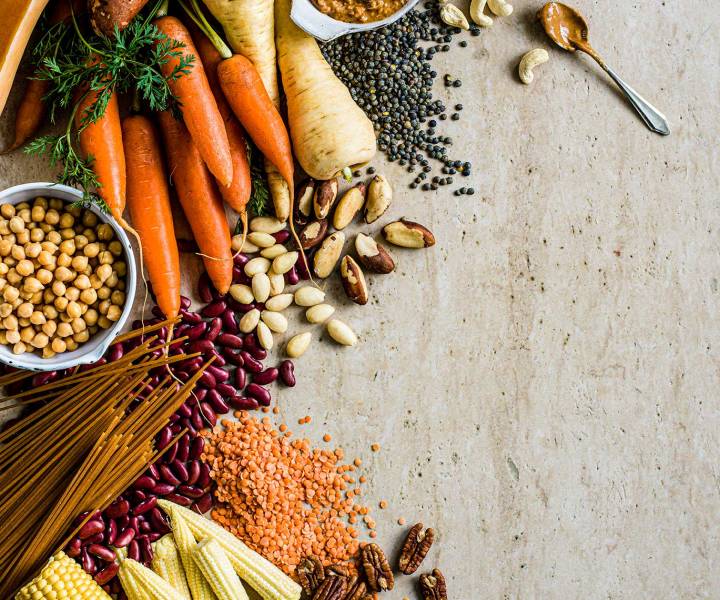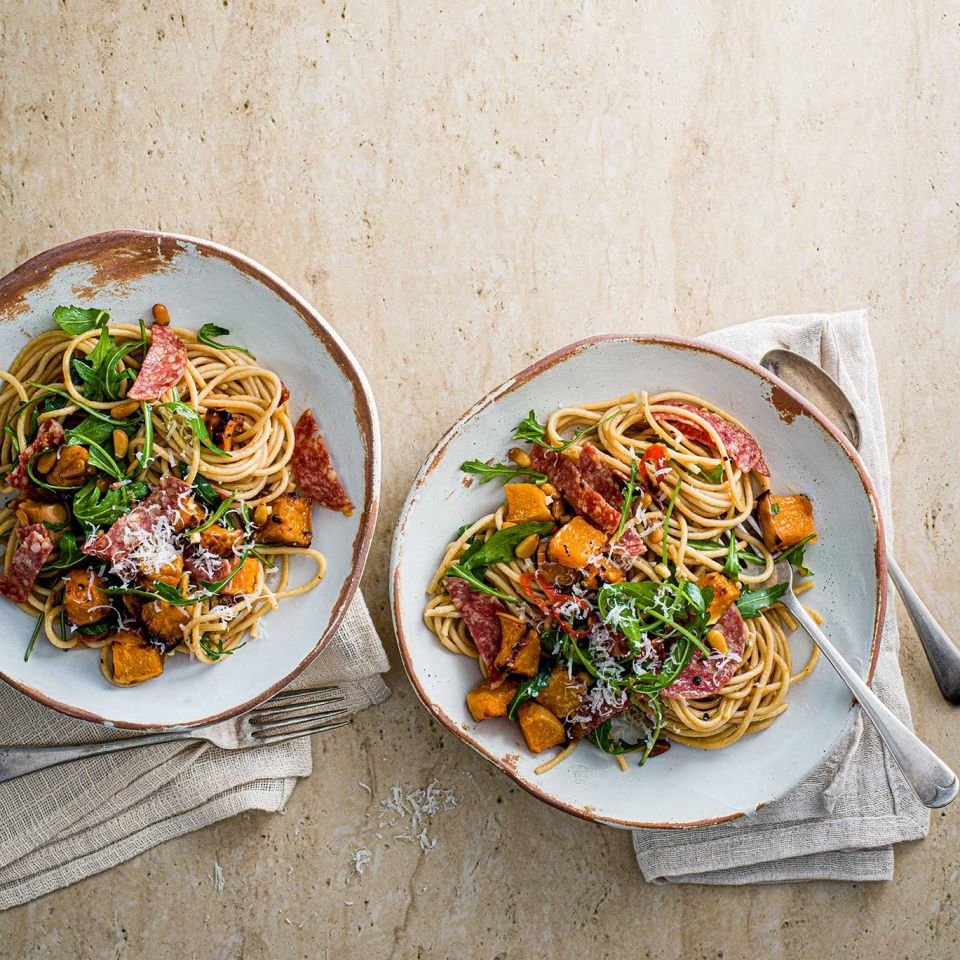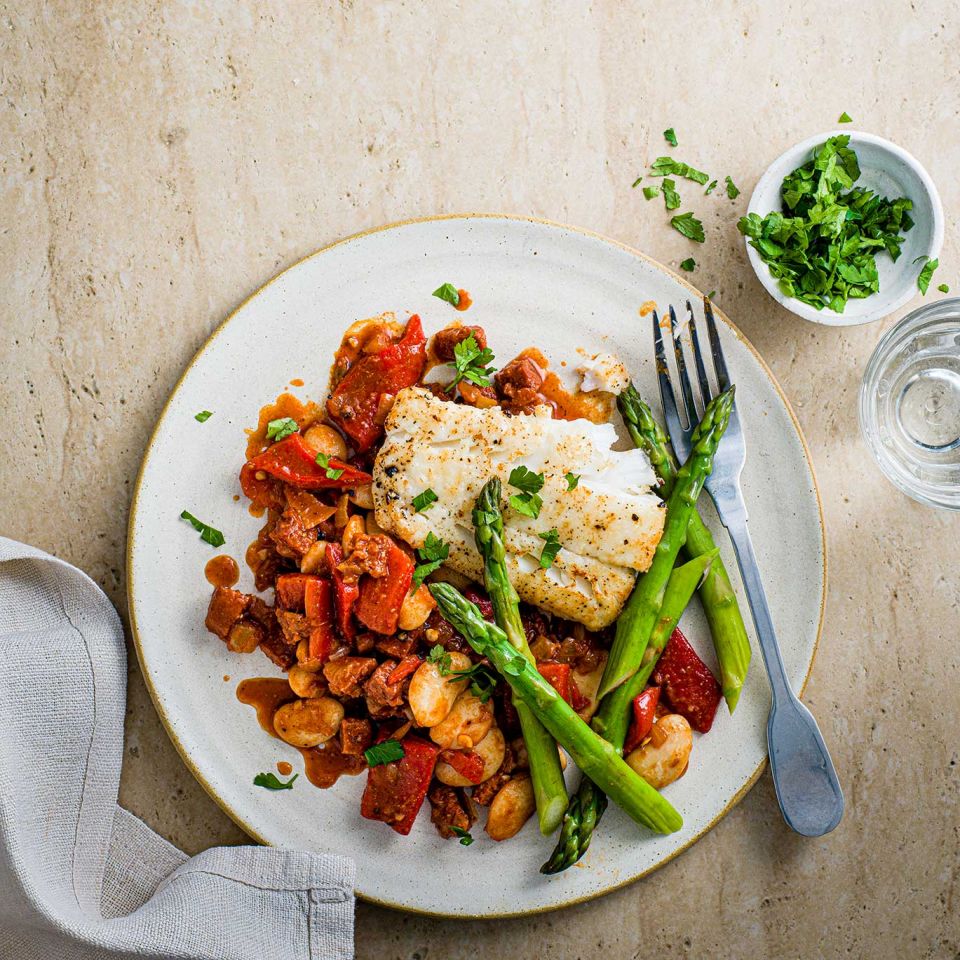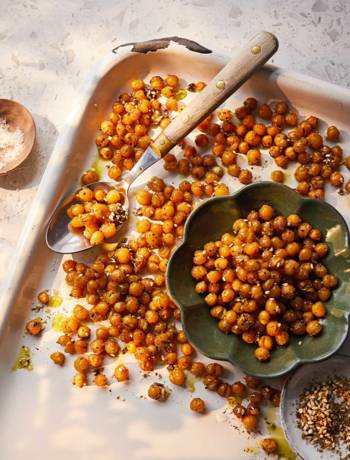Health
Slow and steady: Everything you need to know about slow carbs
by Hannah Ebelthite

When it comes to carbs, low and no are out, and slow is in. Find out how to get more out of nature’s most important source of fuel
Confused about carbohydrates? It’s not surprising. Here’s one food group that’s rarely out of the diet headlines – but for reasons that are never quite clear. Do carbs cause weight gain and trigger our appetites? Or is a high-carb, high-fibre diet better for our health?
The truth, says leading dietitian Helen Bond, is that despite the popularity of low-carb eating plans such as Dukan, keto and Atkins, carbohydrates are an essential part of a healthy, balanced diet. ‘They’re one of the three macronutrients – alongside fat and protein – that our bodies need lots of for energy, and should provide us with about 50% of our daily energy needs,’ she explains. ‘But that doesn’t mean you need to eat half a loaf of bread! Carbohydrates aren’t just in grains, they’re found in vegetables, fruit, legumes, nuts, seeds – in fact, all plant foods.’
Carbohydrates are eventually broken down by your body into sugars (glucose) and burned or stored as a source of energy. But different types of carbs do this at different rates. Simple carbohydrates (aka ‘fast’ carbs) are made up of short chains of molecules that are digested quickly. These are the type you’ll find in foods such as sweets, cake, jam and fruit juice – they’re also known as free sugars. They contain little or no fibre and, as their name implies, can cause a rapid rise in blood sugar.
The second category, complex carbohydrates (or ‘slow’ carbs), contain longer chains of molecules and are digested more slowly. Found in brown rice, pulses, wholewheat pasta, potatoes, wholegrain bread and some fruit and veg, slow carbs contain nutrients such as vitamins, minerals and fibre. Eating slow carbs also helps balance blood sugar and prevent low blood sugar, which can make you feel hungry.

Fast V slow
Experts use the glycaemic index (GI) to rank carbohydrates, a scoring system from zero to 100 that’s based on how fast different foods raise blood-glucose levels. It was originally developed for diabetics, but its usefulness has grown with our understanding of the impact blood-sugar levels have on hunger. Slow carbs rank lower on the GI index; fast carbs, which cause a rapid rise-and-fall in blood sugar, have a higher GI. ‘It’s particularly important for people with diabetes who need to control their blood-glucose levels,’ says Helen. ‘But choosing low GI can also help the general population when it comes to maintaining a healthy weight.’
How so? ‘The complex structure of low-GI foods means digestion is slower, resulting in a more controlled release of energy,’ says Helen. ‘Plus your body burns more calories during digestion (called thermogenesis), which can be handy if you’re looking to maintain your weight.’ A number of studies show that a low-GI meal can be more satisfying than a high-GI meal and can help control overeating.
And it’s not just weight management that’s aided by slow carbs. The speedy absorption of high-GI foods, and the resulting insulin spikes (followed by the inevitable dip), can lead to insulin resistance and type 2 diabetes, and a slew of other health problems.
Taking action
There are lots of things you can do to keep your blood-sugar levels balanced. Daily exercise helps, and so do regular snacks and meals, but your food choices are key. That’s where low-GI foods come in. Foods with a GI lower than 55 cause a slight rise in blood sugar; those in the 55 to 70 range raise it a little higher; and foods with a GI of 70-plus send it soaring.
As a general rule, fast carbs such as sweets or sugary drinks have a high GI, while slow carbs like beans, oats and lentils have a low GI. But there are exceptions... ‘Chocolate and ice cream actually have quite a low-GI rating, but being high in fat, sugar and calories, are obviously not always a healthy choice,’ says Helen. ‘Potatoes are fairly high GI but, in their natural form, contain plenty of fibre, vitamins and minerals, contributing to a healthy diet. Just ask yourself: “Is this a wholefood carbohydrate, in its natural state, or has it been heavily processed?” Processing plant foods – whether that’s turning grains into white, sugary baked goods or turning whole fruit into juices or smoothies – usually means removing the all-important fibre.’

The F word
Fibre is a type of carbohydrate – and one of the most crucial nutrients. Worryingly, it is also one which most of us are lacking. Adults need 30g in their diets daily but, according to the National Diet and Nutrition survey, most of us are falling short at 19.7g. ‘So we really need to get that up – and we need complex carbs to do it,’ says Helen. Fibre is at the heart of the slow-carb revolution and not just because it ‘keeps you regular’ (although that’s a definite benefit).
‘Fibre-rich foods score highly on the satiety index, a scale that measures how satisfied food makes us feel,’ says Dr Khosro Ezaz-Nikpay, author of the forthcoming Fibre for Life: Eat Your Way to Better Health with Nature’s Miracle Ingredient (Pavilion). ‘You feel fuller for longer and tend to eat less overall, so it’s a great weight-management tool.’ Eating more fibre has been linked with a reduced risk of type 2 diabetes and colorectal cancer, improved heart health and blood circulation, reduced inflammation, and a strengthening of hormonal and immune systems.
And all these benefits could be down to one key role fibre plays in the body: it enhances the health of our gut microbiome – the trillions of bacteria that line our gut. ‘The greater the variety of complex carbs we take on board, the more types of fibre we’ll feed them,’ says Dr Ezaz-Nikpay. ‘And they’ll repay us by increasing their own number, diversity – and our overall health.’
5 things you need to know about The Slow Carb Plan
1. If you are increasing your intake of wholegrains, take it slowly, says Helen Bond. ‘If you do it too quickly you can overload your digestive tract and that can provoke feelings of bloating and distension.’
2. Opt for wholegrain breads instead of white, brown basmati in place of plain rice, wholewheat pasta instead of standard. You could even try some of the ancient grains such as bulgur wheat, wholegrain couscous, millet and quinoa.
3 Thirty grams of fibre looks like five portions of veg, two of fruit, three portions of wholegrains and one to two of nuts, seeds or legumes. ‘It might sound a lot, but you’ll get that naturally if you focus on making unprocessed choices,’ says Helen.
4. 'Think of easy ways to sneak more fibre in,’ says Dr Khosro Ezaz-Nikpay. ‘Things like sprinkling seeds on your cereal, adding extra veg to your supper or throwing pulses in a salad will make a huge difference.’
5. Healthy hacks such as leaving the skin on potatoes when you mash them or swapping crisps for popcorn (a wholegrain) will increase your fibre consumption and help keep energy levels stable.












